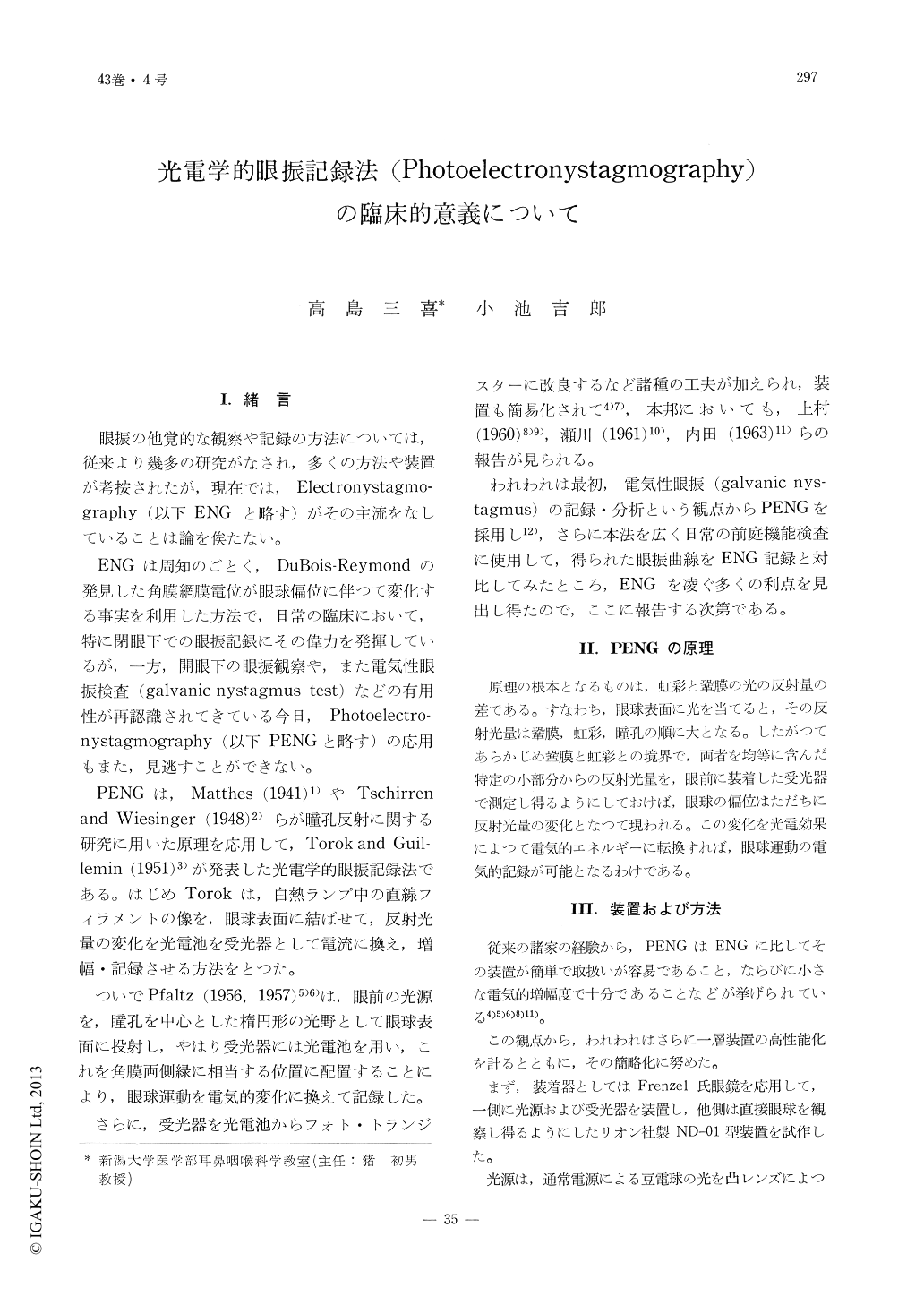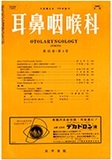Japanese
English
- 有料閲覧
- Abstract 文献概要
- 1ページ目 Look Inside
Ⅰ.緒言
眼振の他覚的な観察や記録の方法については,従来より幾多の研究がなされ,多くの方法や装置が考按されたが,現在では,Electronystagmography(以下ENGと略す)がその主流をなしていることは論を俟たない。
ENGは周知のごとく,DuBois-Reymondの発見した角膜網膜電位が眼球偏位に伴つて変化する事実を利用した方法で,日常の臨床において,特に閉眼下での眼振記録にその偉力を発揮しているが,一方,開眼下の眼振観察や,また電気性眼振検査(galvanic nystagmus test)などの有用性が再認識されてきている今日,Photoelectronystagmography(以下PENGと略す)の応用もまた,見逃すことができない。
The author emphasizes the practical usefulness of PENG (photoelectronystagmography) in clinical investigation of nystagmus. The simplicity with which the technical procedure may be applied with its high sensitivity eliminating EMG factors and other signal to noises are the prominent features marking the advantages of relying upon PENG.
Particularly, the recording of galvanic nystagmus was made feasible only by the use of PENG. An without which ENG recording could not have avoided the intervention of artifacts caused by muscle tremor and by changes of periocular fields that had occurred during galvanic stimulations. However, the merits of PENG are mainly regarded as a means by which the above mentioned artifacts may be avoided.

Copyright © 1971, Igaku-Shoin Ltd. All rights reserved.


